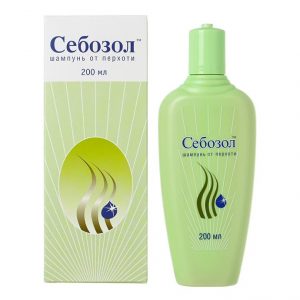Description
Release form
Tablets
Pharmacological action of
Pharmacotherapeutic group: Angiotensin II receptor antagonist
ATX:
C.09.CA07 Telmisartan
Pharmacodynamics:
Telmisartan is a specific antagonist of angiotensin II receptor, an effective antagonist (angiotensin II receptor). It has a high affinity for the AT1 subtype of angiotensin II receptors, through which the action of angiotensin II is realized. Displaces angiotensin II from the connection with the receptor, not possessing the action of an agonist in relation to this receptor. Telmisartan binds only to the AT1 subtype of angiotensin II receptors. Communication is long lasting. It has no affinity for other receptors, including the AT2 receptor and other less studied angiotensin receptors. The functional significance of these receptors, as well as the effect of their possible excessive stimulation with angiotensin II, the concentration of which increases with the appointment of telmisartan, has not been studied. It reduces the concentration of aldosterone in the blood, does not inhibit renin in blood plasma and does not block ion channels. Telmisartan does not inhibit the angiotensin converting enzyme (kininase II) (an enzyme that also breaks down bradykinin). Therefore, amplification of the side effects caused by bradykinin is not expected.
In patients with arterial hypertension, telmisartan at a dose of 80 mg completely blocks the hypertensive effect of angiotensin II. The onset of antihypertensive action is noted within 3 hours after the first oral administration of telmisartan. The effect of the drug persists for 24 hours and remains significant up to 48 hours. A pronounced antihypertensive effect usually develops 4 weeks after regular use of the drug.
In patients with arterial hypertension, telmisartan lowers systolic and diastolic blood pressure (BP) without affecting heart rate (HR).
In the case of abrupt cancellation of telmisartan, blood pressure gradually returns to its original level without the development of withdrawal syndrome.
Pharmacokinetics:
Absorption
When taken orally, it is rapidly absorbed from the gastrointestinal tract. Bioavailability is about 50%. When taken simultaneously with food, the decrease in AUC (the area under the concentration-time curve) ranges from 6% (at a dose of 40 mg) to 19% (at a dose of 160 mg). 3 hours after ingestion, the concentration in the blood plasma is leveled regardless of the meal.
Distribution of
Communication with plasma proteins – 99.5%, mainly with albumin and alpha-1 glycoprotein. The average value of the apparent volume of distribution in equilibrium concentration is 500 l.
Metabolism
Metabolized by conjugation with glucuronic acid. Metabolites are pharmacologically inactive.
Withdrawal
Elimination half-life (T1 / 2) – more than 20 hours. It is excreted through the intestine unchanged, excretion by the kidneys – less than 2% of the dose taken. The total plasma clearance is high (900 ml / min) compared with hepatic blood flow (about 1500 ml / min).
Pharmacokinetics in special patient groups
Gender differences
There is a difference in plasma concentrations in men and women. Cmax (maximum concentration) and AUC were approximately 3 and 2 times, respectively, higher in women compared with men without a significant effect on effectiveness. Dose adjustment is not required.
Elderly patients
The pharmacokinetics of telmisartan in elderly patients are not different from the pharmacokinetics in young patients. Dose adjustment is not required.
Patients with impaired renal function
In patients with mild to moderate impaired renal function, dose adjustment of telmisartan is not required.
Patients with severe renal impairment and those on hemodialysis are recommended a lower initial dose of 20 mg per day.
Telmisartan is not excreted by hemodialysis.
Patients with impaired liver function
Pharmacokinetics studies in patients with hepatic impairment showed an increase in the absolute bioavailability of telmisartan to almost 100%.
With liver failure, T1 / 2 does not change. In patients with mild to moderate impaired liver function (class A and B on the Child-Pugh scale), the daily dose should not exceed 40 mg.
Indications
– Arterial hypertension
– Reduced cardiovascular morbidity and mortality in patients aged 55 years and older with a high risk of cardiovascular disease.
Contraindications
– Hypersensitivity to the active substance or auxiliary components of the drug
– Pregnancy
– Breastfeeding period
– Obstructive biliary tract disease
– Severe liver impairment (Class C on the Relative) aliskiren in patients with diabetes mellitus and / or impaired renal function (glomerular filtration rate less than 60 ml / min / 1.73 m2)
– Concomitant use of ACE inhibitors in a patient in diabetic nephropathy
– Age 18 years (effectiveness and safety have been established).
Caution:
– Bilateral renal artery stenosis or stenosis of a single kidney artery
– Impaired liver and / or kidney function (see Special instructions)
– Condition after kidney transplantation (no experience with use)
– Decreased circulating blood volume (BCC) due to previous diuretic therapy, restriction of salt intake, diarrhea or vomiting
– Hyponatremia
– Hyperkalemia
– Chronic Coronary heart disease
– Aortic and mitral valve stenosis
– Idiopathic hypertrophic subaortic stenosis (hypertrophic obstructive cardiomyopathy)
– Primary aldost eronism (efficacy and safety have not been established)
– Concomitant use with ACE inhibitors or aliskiren
– Concurrent use with potassium preparations, potassium-sparing diuretics
– Diabetes mellitus.
Pregnancy and lactation
Medicines that directly affect the RAAS, can cause serious damage and death of the developing fetus, therefore, when planning or establishing the fact of pregnancy, the drug should be immediately discontinued and, if necessary, alternative antihypertensive therapy with an established safety profile when used during pregnancy should be prescribed. The use of the drug during pregnancy is contraindicated.
In preclinical studies of telmisartan, teratogenic effects were not detected, but fetotoxicity was established. It is known that the effects of angiotensin II receptor antagonists during the second and third trimesters of pregnancy cause fetotoxicity in a person (decreased renal function, oligohydramnios, delayed ossification of the skull), as well as neonatal toxicity (renal failure, hypotension, hyperkalemia). To patients those planning pregnancy should be given alternative therapy. If treatment with angiotensin II receptor antagonists occurred during the second trimester of pregnancy, ultrasound testing of the kidney function and the condition of the skull in the fetus is recommended.
Newborns whose mothers received angiotensin II receptor antagonists should be closely monitored for hypotension.
Telpres therapy is contraindicated during breastfeeding. Studies of the effect on human fertility have not been conducted.
Special instructions
Impaired liver function
The use of Telpres is contraindicated in patients with cholestasis, obstruction of the biliary tract or severe impaired liver function (Child-Pu classification class C) (see section Contraindications), since telmisartan is mainly excreted in bile. It is believed that in such patients, hepatic clearance of telmisartan is reduced. In patients with mild or moderate hepatic impairment (Child-Pugh class A and B), Telpres should be used with caution (see section Caution).
Renovascular hypertension
In patients with bilateral arterial stenosis or arterial stenosis of a single functioning kidney, treatment with drugs acting on RAAS increases the risk of severe arterial hypotension and renal failure.
Impaired renal function and kidney transplantation
When using Telpres in patients with impaired renal function, periodic monitoring of potassium and creatinine in blood plasma is recommended. There is no clinical experience with Telpres in patients who have recently undergone kidney transplantation.
Decreased circulating blood volume
Symptomatic arterial hypotension, especially after the first administration of Telpres, may occur in patients with reduced BCC and / or sodium in the blood plasma against the background of previous treatment with diuretics, restriction of sodium chloride, diarrhea or vomiting. Such conditions (fluid and / or sodium deficiency) should be eliminated before taking Telpres.
Double blockade of the renin-angiotensin-aldosterone system
The concomitant use of telmisartan with aliskiren is contraindicated in patients with diabetes mellitus or renal failure (glomerular filtration rate less than 60 ml / min / 1.73 m2) (see section Contraindications).
The simultaneous use of telmisartan and ACE inhibitors is contraindicated in patients with diabetic nephropathy (see section Contraindications).
As a result of inhibition of RAAS, arterial hypotension, fainting, hyperkalemia, and impaired renal function (including acute renal failure) were noted in patients predisposed to this, especially when using several drugs that also act on this system. Therefore, a double blockade of RAAS (for example, while taking telmisartan with other RAAS antagonists) is not recommended.
In cases of dependence of vascular tone and renal function mainly on RAAS activity (for example, in patients with chronic heart failure or kidney disease, including renal artery stenosis or stenosis of a single kidney artery), prescribing drugs that affect this system, may be accompanied by the development of acute arterial hypotension, hyperazotemia, oliguria and, in rare cases, acute renal failure.
Primary aldosteronism
In patients with primary aldosteronism, treatment with antihypertensive drugs, which are carried out by inhibiting RAAS, is usually ineffective.
Aortic and mitral valve stenosis, hypertrophic obstructive cardiomyopathy
Caution should be exercised when using Telpres (as well as other vasodilators) in patients with aortic or mitral stenosis, as well as hypertrophic obstructive cardiomyopathy.
Hyperkalemia
Taking medications acting on the RAAS can cause hyperkalemia. In elderly patients, patients with kidney failure or diabetes mellitus, patients also taking medications, contributing to an increase in potassium in the blood plasma, and / or in patients with concomitant diseases, hyperkalemia can be fatal.
When deciding on the concomitant use of drugs acting on the RAAS, it is necessary to assess the risk-benefit ratio.
The main risk factors for hyperkalemia that should be considered are:
– diabetes mellitus, renal failure, age (patients older than 70 years)
– combination with one or more drugs acting on RAAS and / or potassium-containing food additives. Drugs or therapeutic classes of drugs that can cause hyperkalemia are salt substitutes containing potassium, potassium-sparing diuretics, ACE inhibitors, angiotensin II receptor antagonists, nonsteroidal anti-inflammatory drugs (NSAIDs, including selective COX-2 inhibitors), heparin, immunosuppressants (cyclosporine or tacrolimus) and trimethoprim
– intercurrent diseases, especially dehydration, acute heart failure, metabolic acidosis, impaired renal function, for example, cytolysis acute limb ischemia, rhabdomyolysis, extensive trauma).
Patients at risk are advised to carefully monitor their potassium in the blood plasma (see Interaction with Other Medicines section).
Ethnic differences
ACE inhibitors, telmisartan, and other ARAII seem to lower blood pressure less effectively in patients of the Negroid race than in other races, possibly due to a greater predisposition to a decrease in renin activity in the population of these patients.
Other
As with other antihypertensive drugs, an excessive decrease in blood pressure in patients with ischemic cardiomyopathy or coronary heart disease can lead to myocardial infarction or stroke.
Impact on the ability to drive transp. Wed and fur .:
Special clinical studies of the effect of the drug on the ability to drive a car and mechanisms have not been conducted. When driving and working with mechanisms that require an increased concentration of attention, care should be taken, since dizziness and drowsiness can rarely occur with telmisartan.
Composition
Active ingredient: telmisartan – 80.00 mg
Excipients: sodium hydroxide – 6.70 mg, povidone-K25 – 21.60 mg, meglumine – 24.00 mg, mannitol – 327.70 mg, magnesium stearate – 8.00 mg, crospovidone – 12.00 mg.
Overdose
Information on overdose is limited.
Symptoms: the most significant are a marked decrease in blood pressure and tachycardia, bradycardia, dizziness, increased serum creatinine concentration and acute renal failure can also be observed.
Treatment: symptomatic and supportive. Proposed measures include inducing vomiting and / or gastric lavage, taking activated charcoal, and replenishing the lack of fluids and salts. Continuous monitoring of electrolytes and creatinine in blood serum. Hemodialysis is not effective.
Storage conditions
At a temperature not exceeding 25 ° C.
Keep out of the reach of children!
Expiration
2 years.
Deystvuyuschee substances
Telmysartan
tablet form
dosage form tablets




